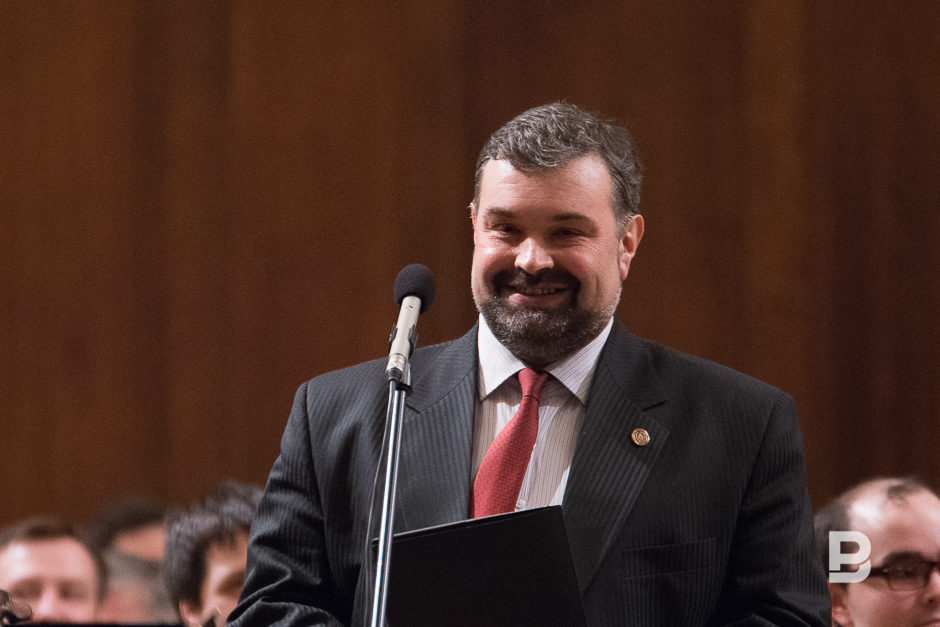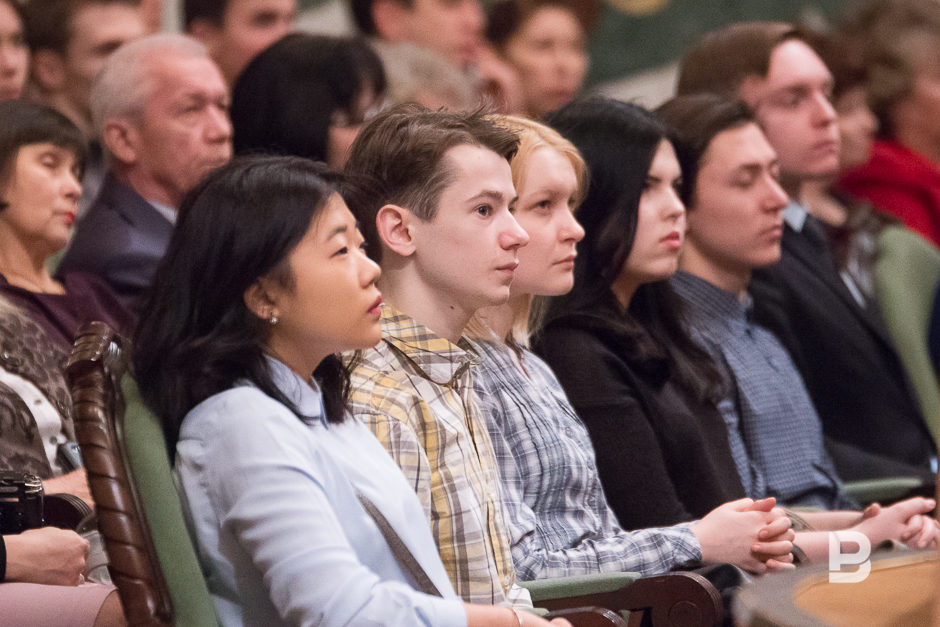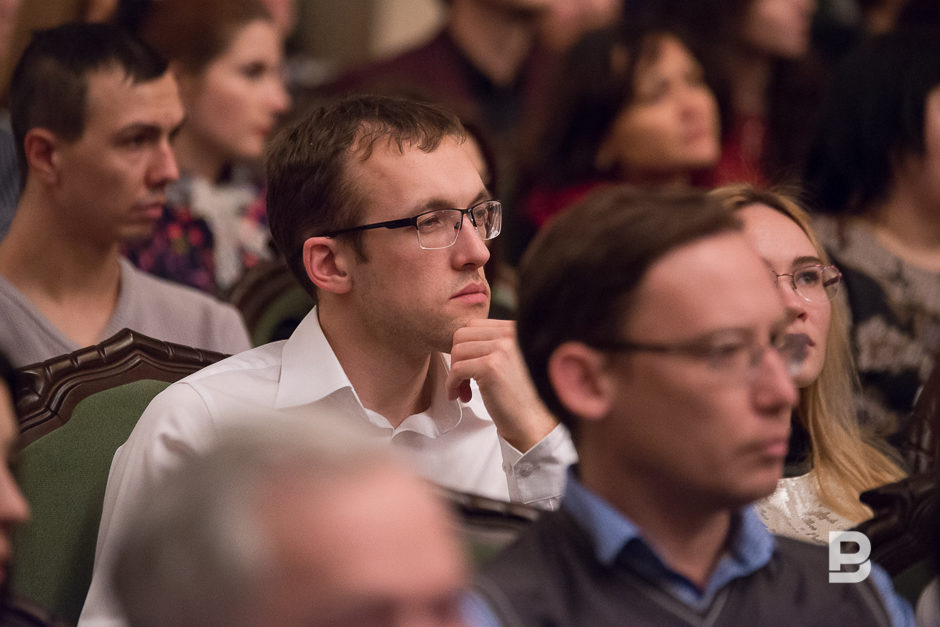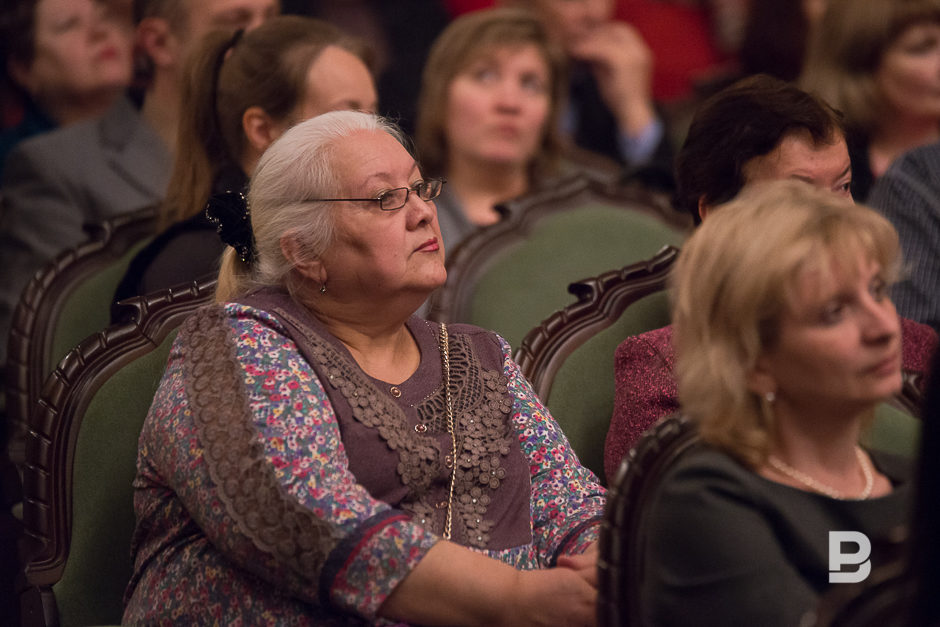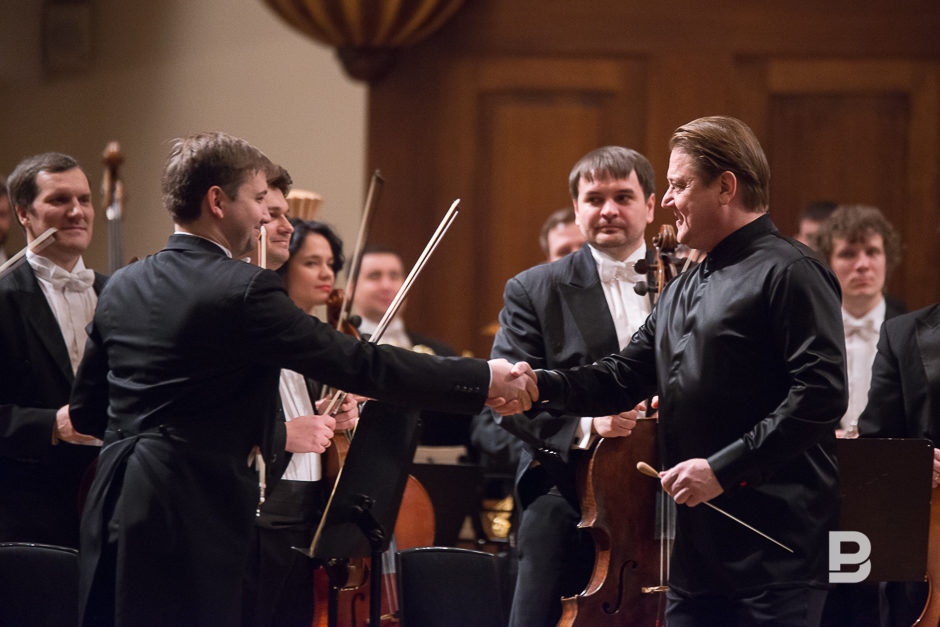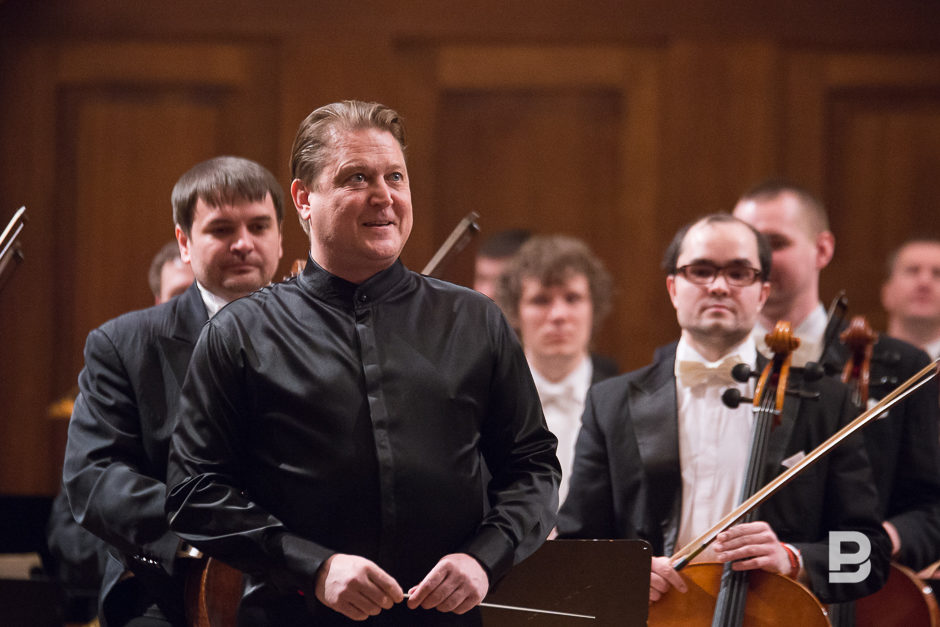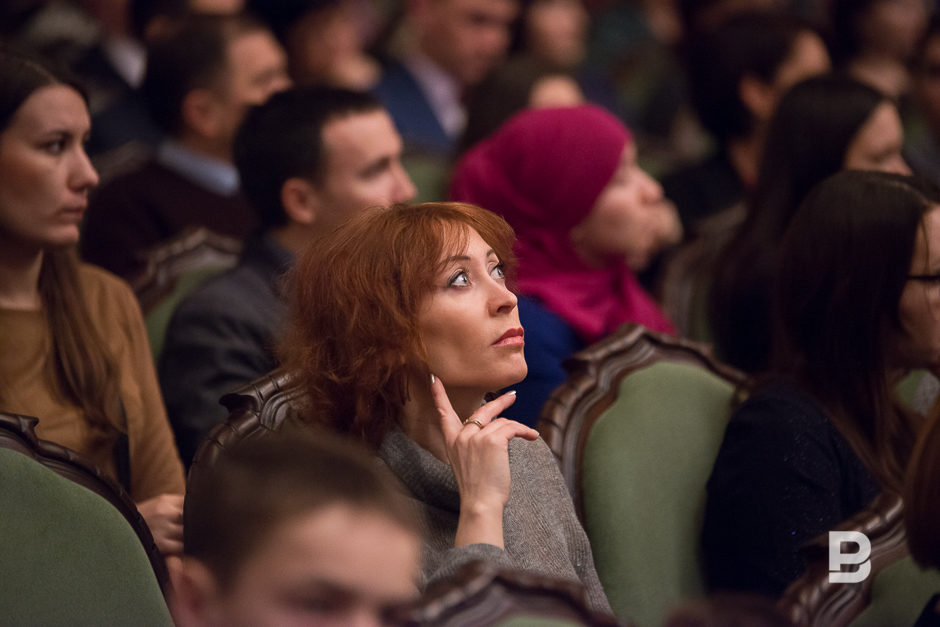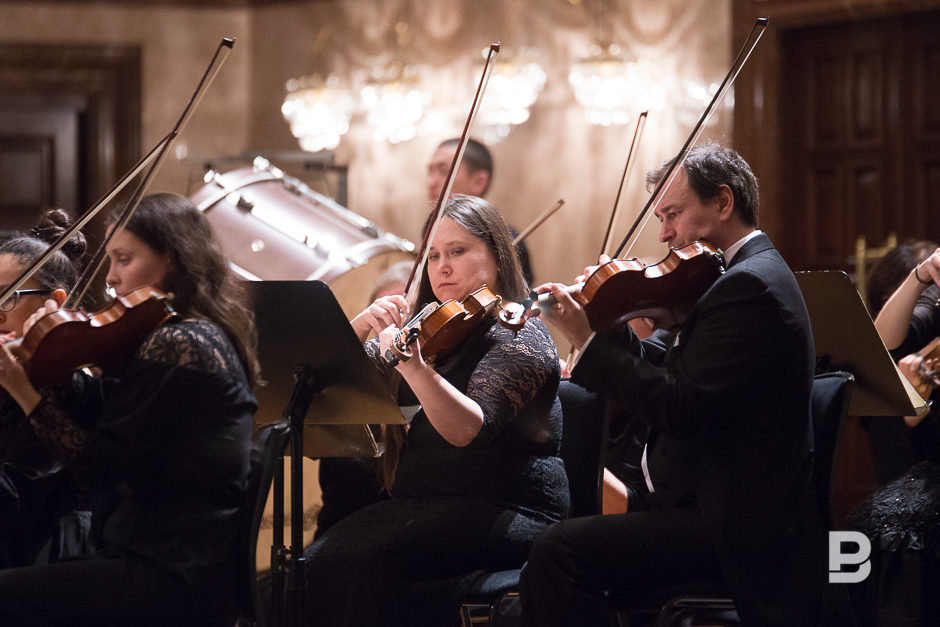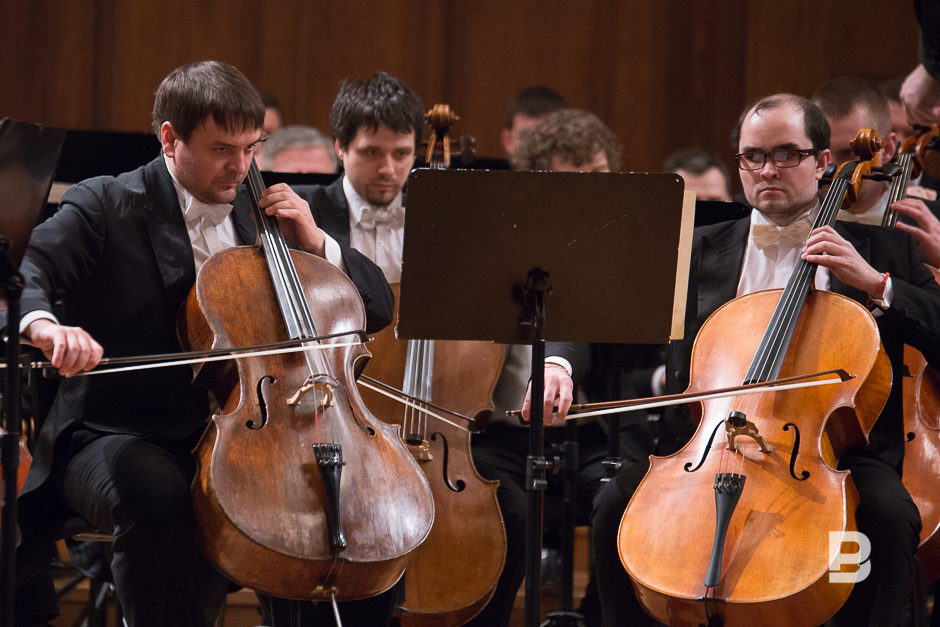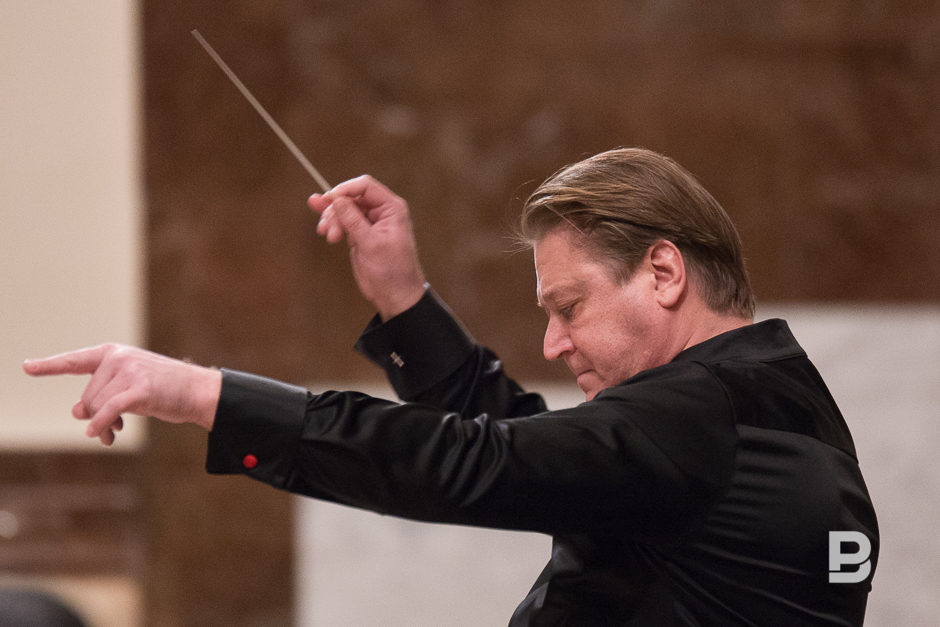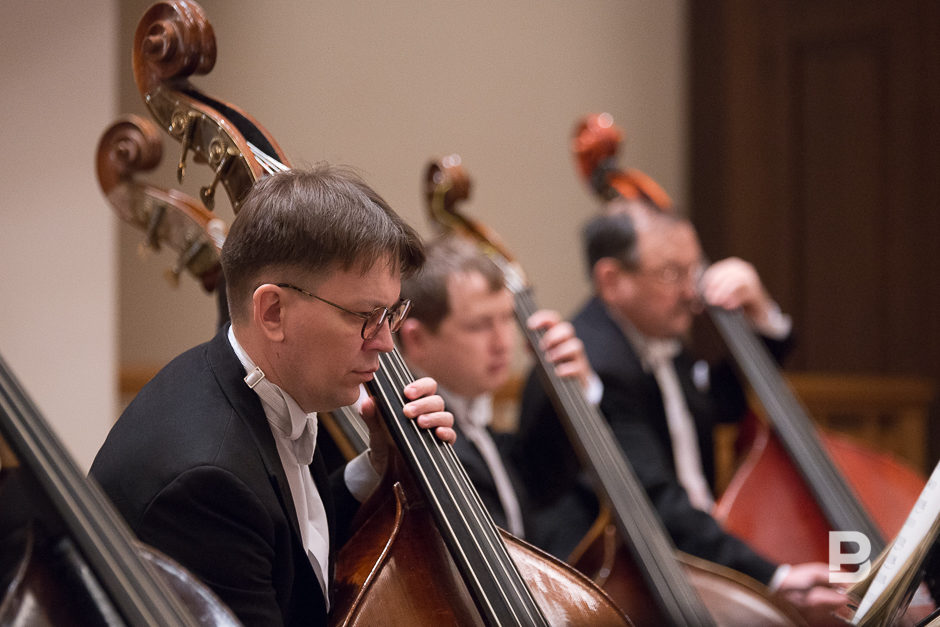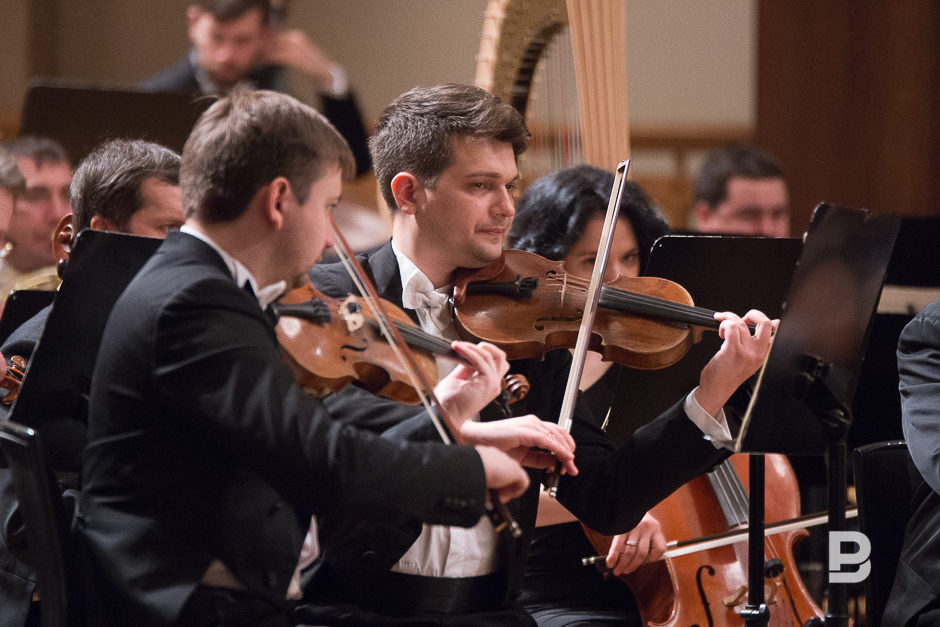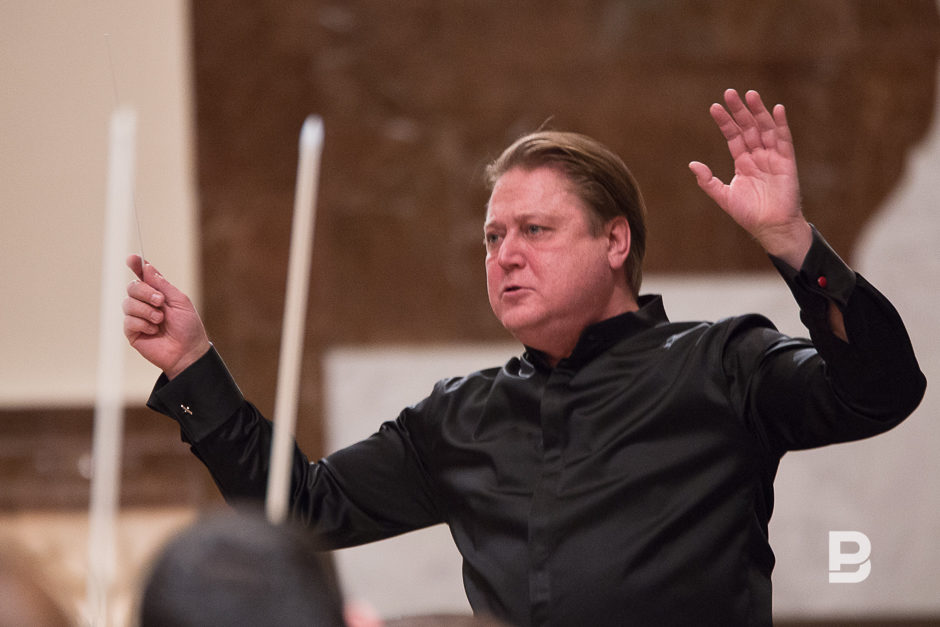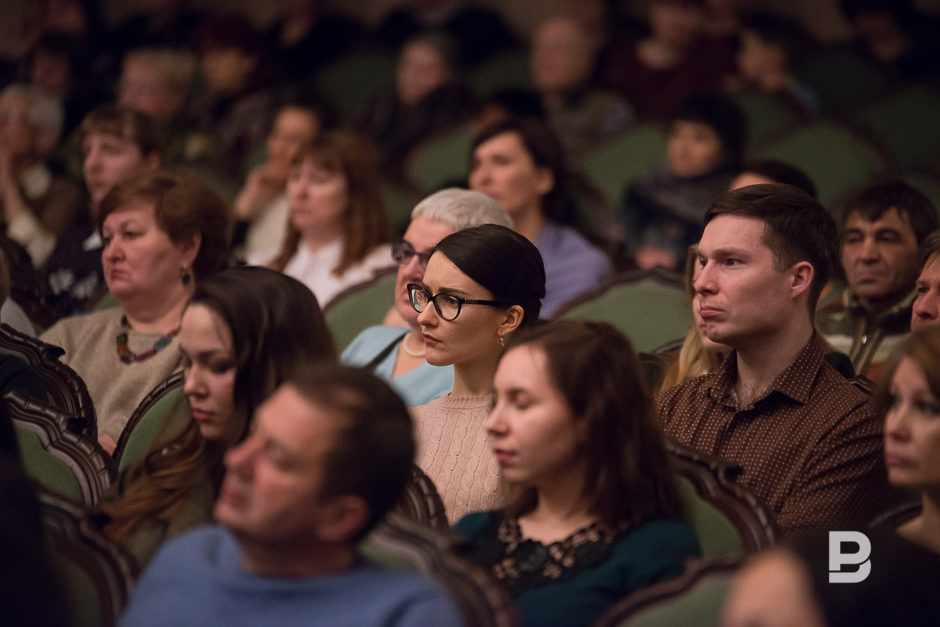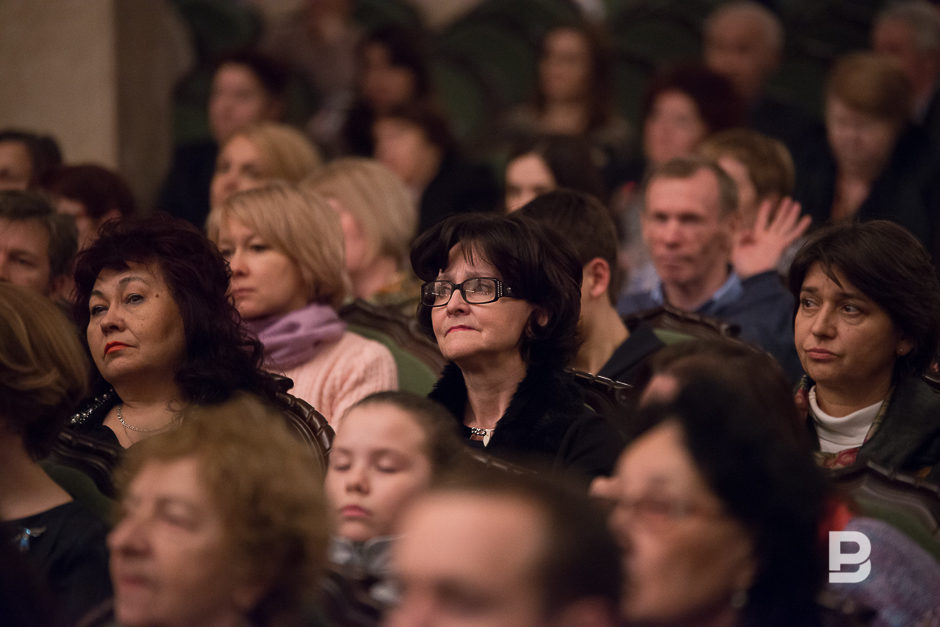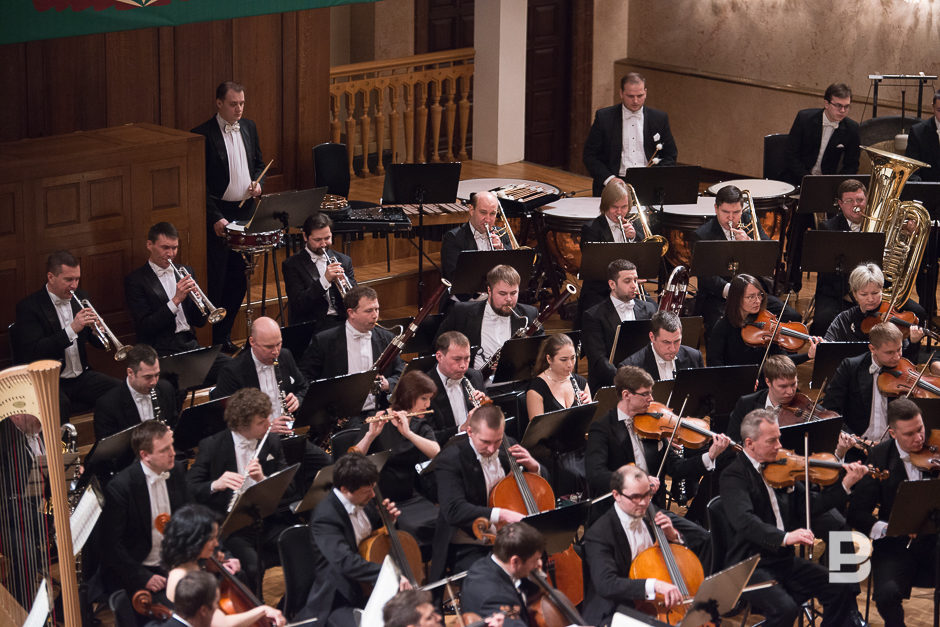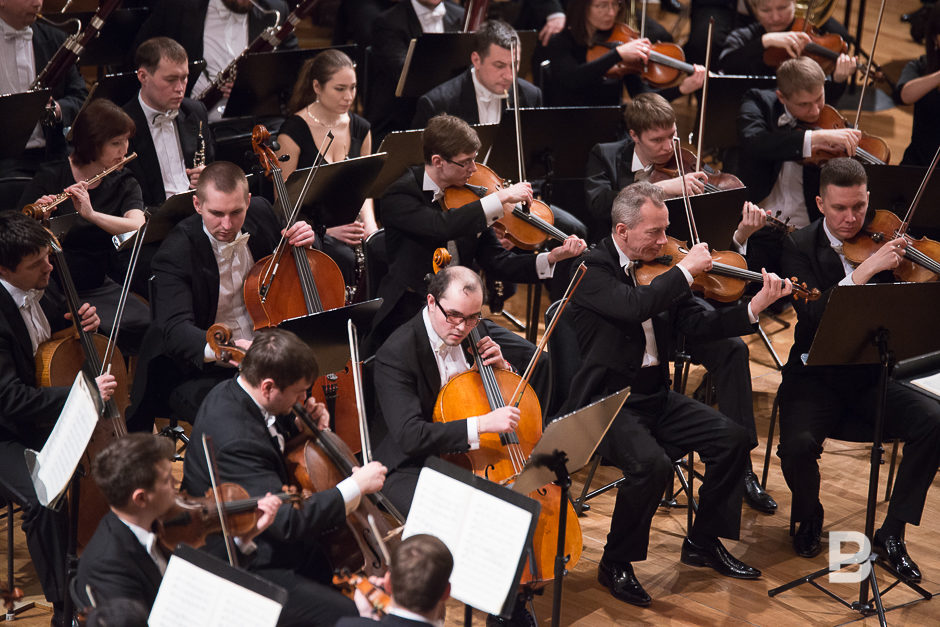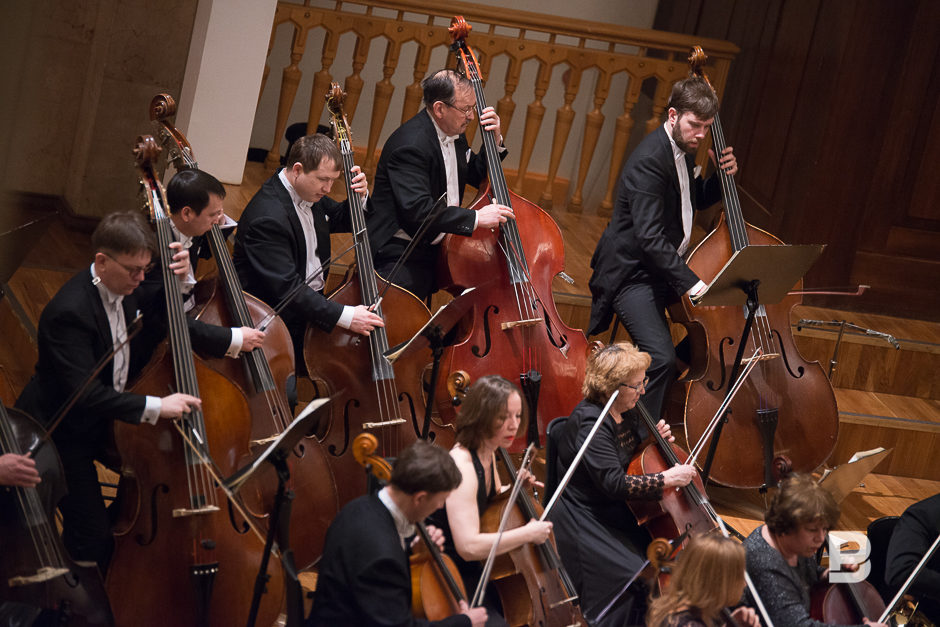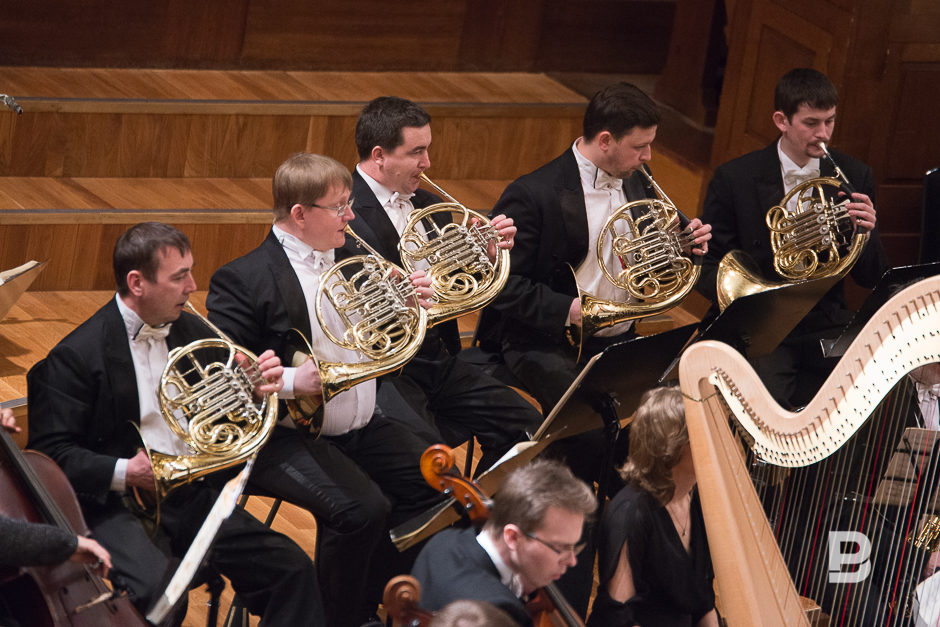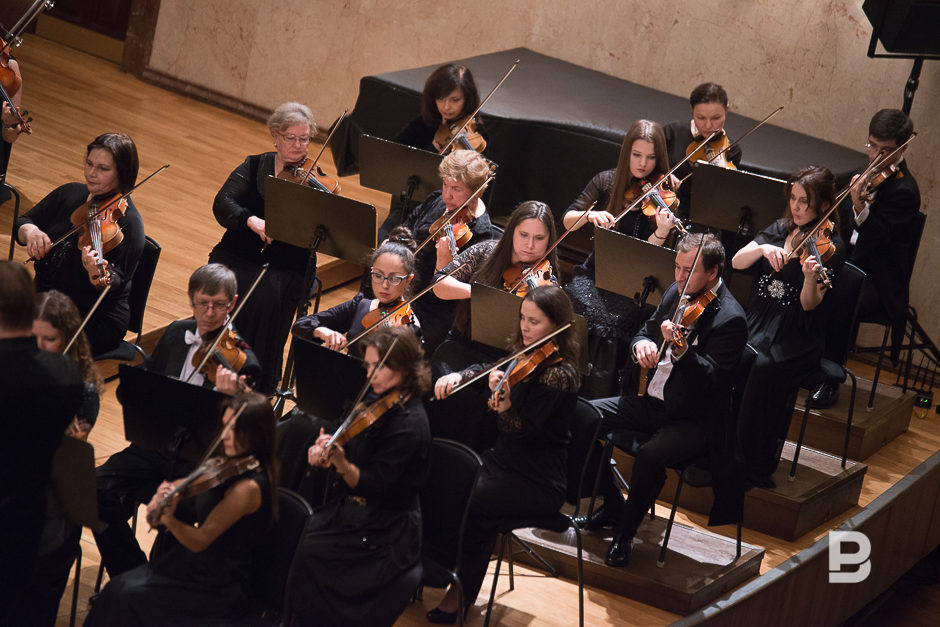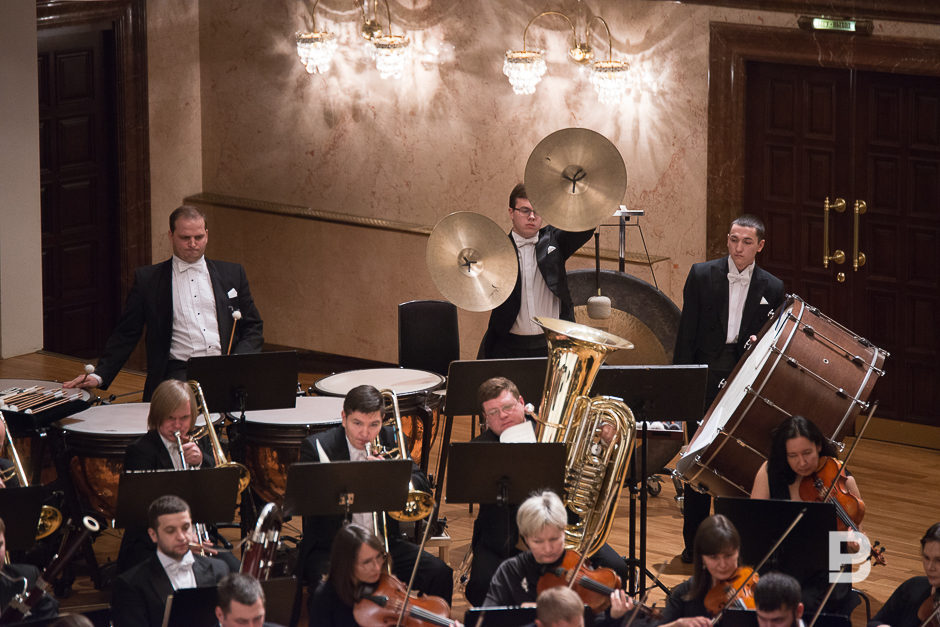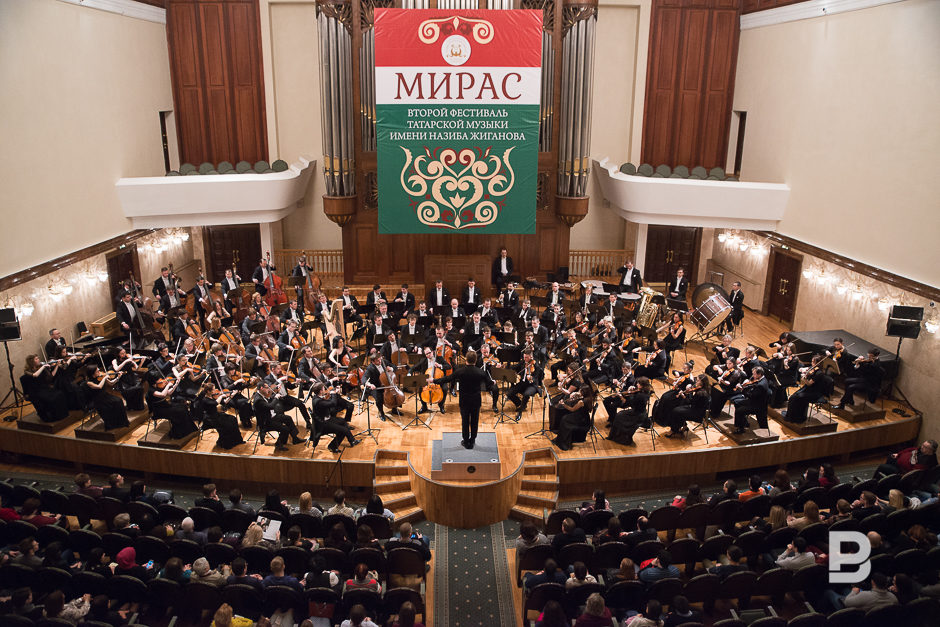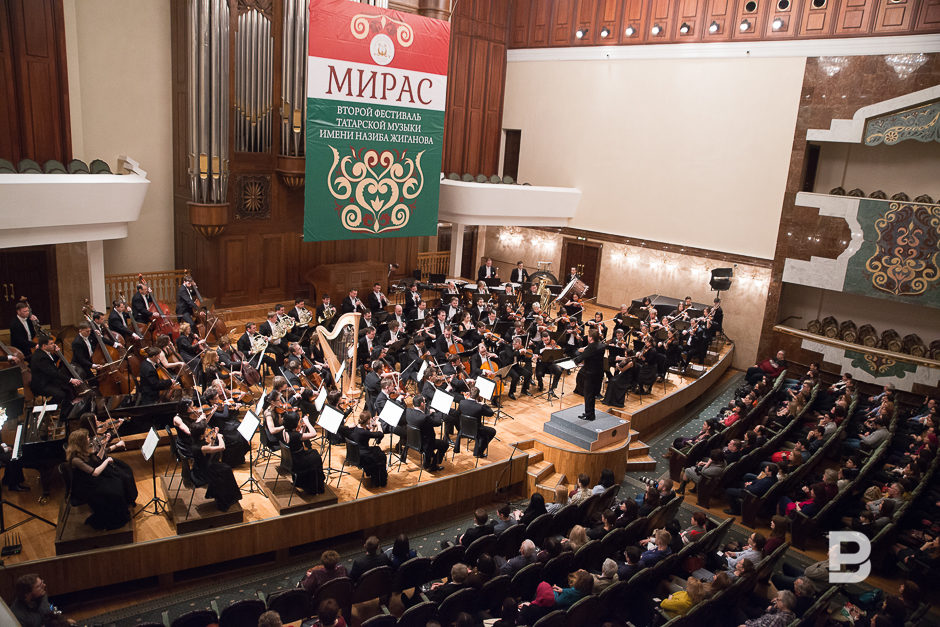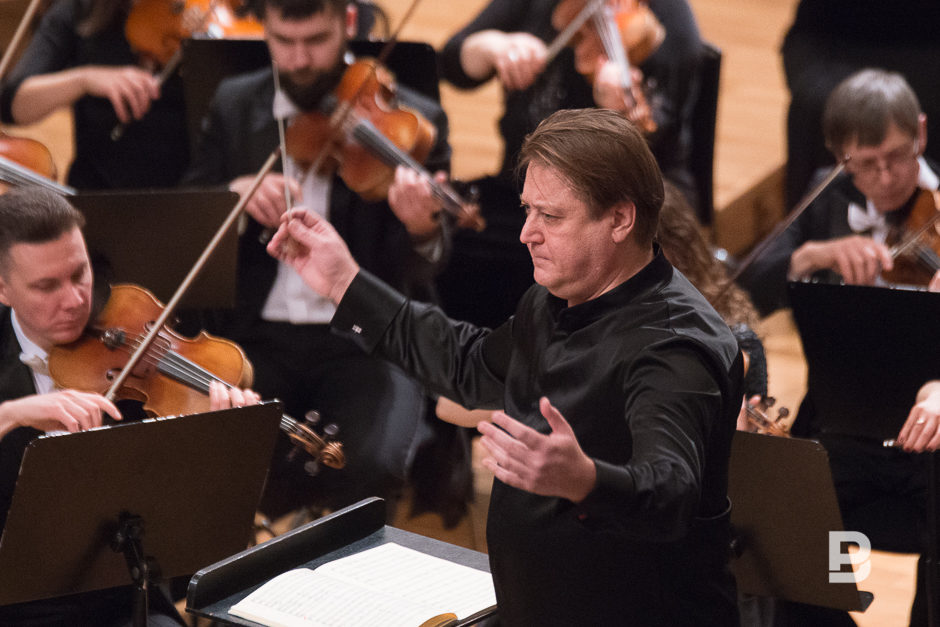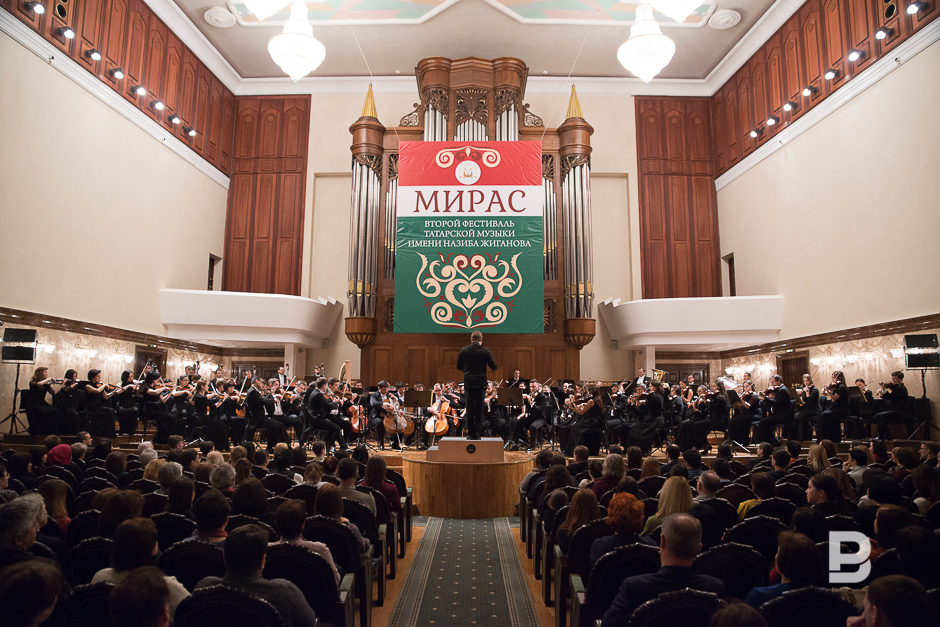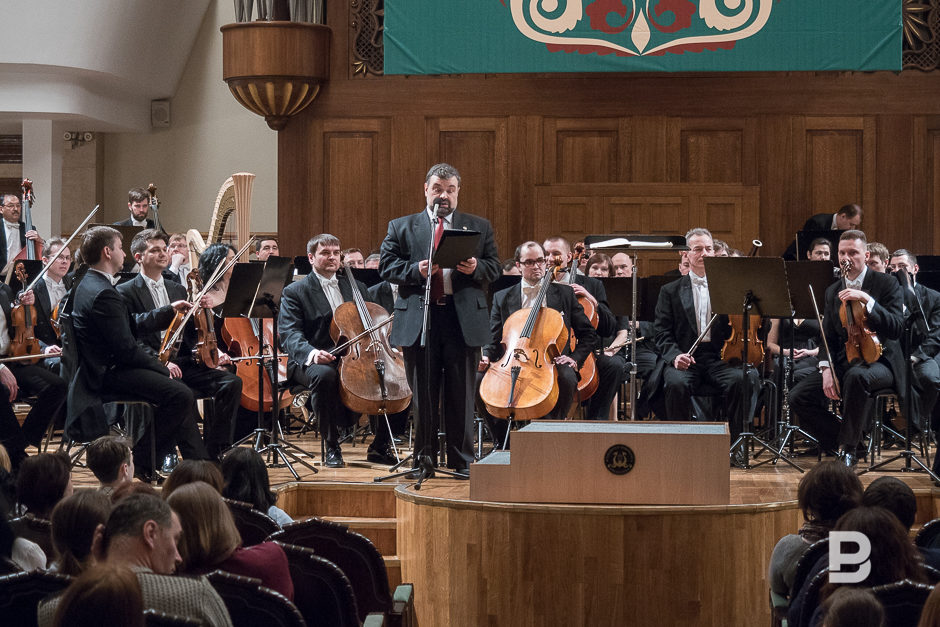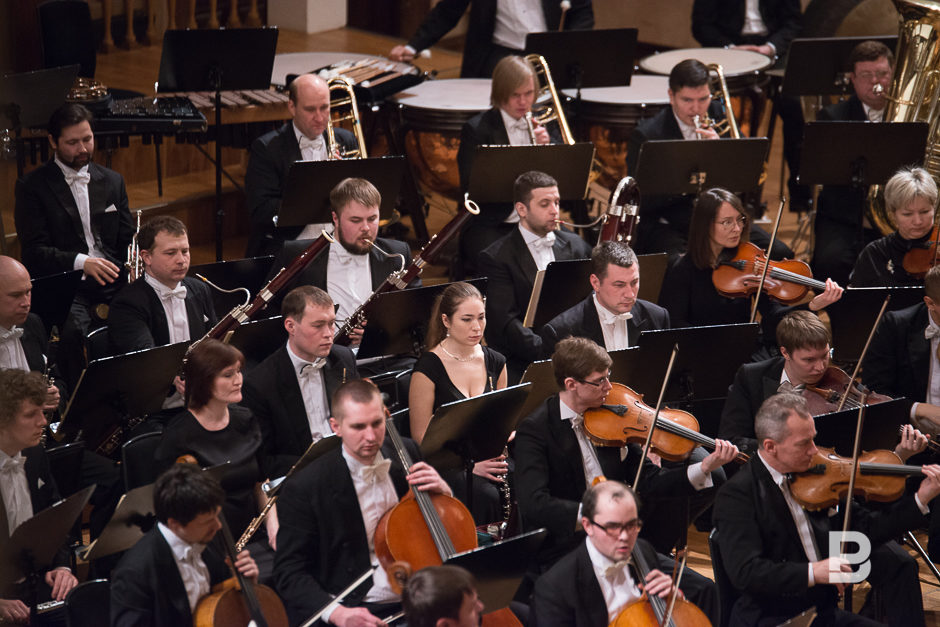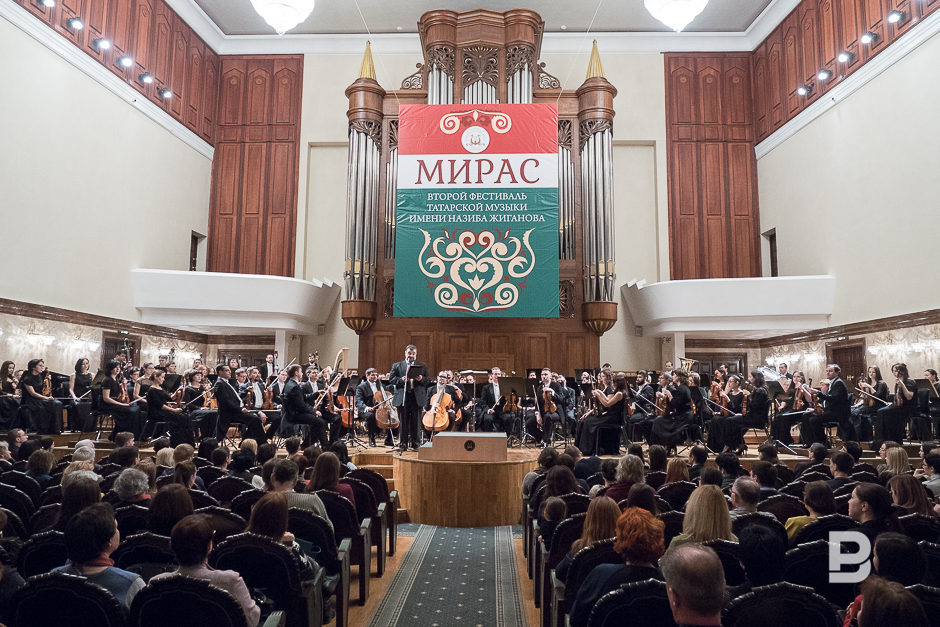Aleksandr Sladkovsky tries himself in the role of a ''restorer''
The festival Miras has opened in Kazan
The festival of the Tatar music Miras, which is translated from Tatar as ''heritage'', started yesterday at the Saidashev State Great Concert Hall. It was initiated a year ago by chief conductor and artistic director of the Tatarstan National Symphony Orchestra Aleksandr Sladkovsky. Wednesday night was devoted to the works of Nazib Zhiganov, a large figure in the Tatar professional music.
''All Tatar composers are connected with Zhiganov''
''Nazib Zhiganov immortalized himself not only in the composer's legacy but also in all other guises. The monument to Zhiganov, it is manifold — it is the Union of composers of Tatarstan, the Opera house, the Conservatoire, the Symphony Orchestra and its great artistic heritage. I feel like an archaeologist because I am ''digging'' what is left from Zhiganov as a composer. No claim to originality, I would say that our task now is to go deep into creativity of Zhiganov-composer. Thanks to these researches, including scientific and, perhaps, there will be some discovery that is still unknown. In this incarnation of me it is also very nice to feel,'' says Aleksandr Sladkovsky.
The first part of the concert was given to the performance of the 9th Symphony of Zhiganov. It was preceded by the performance the art director of Miras, Doctor of Arts, Professor of the Kazan State Conservatoire Vadim Dulat-Aleyev, who in his usual succinct and impressive manner spoke about the artistic objectives of the festival. Before that, Dulat-Aleyev read a message of greetings to listeners and participants of the Miras sent by President of Tatarstan Rustam Minnikhanov. It rightly called Zhiganov ''the major figure in the Tatar music in the 20th century''.
Indeed, Zhiganov left 17 symphonies, 8 operas, 3 ballets, songs, ballads, choral works to the descendants. All of this was created on the background of active social activities.
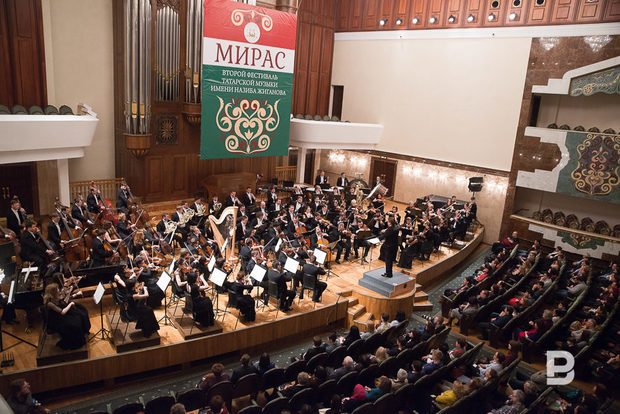
Noting that Zhiganov was the most fruitful among the Tatar Symphony composers, Dulat-Aleyev noticed that all of the Tatarstan composers are somehow connected by invisible threads with Nazib Gayazovich. As for his 9th Symphony, the Professor noted: the audience is present in the hall during its first performance in the 21st century. This phrase was remembered later, when the Symphony already finished, and it was really the sound of the new time.
This Symphony of Zhiganov, interwoven with folk tunes, was first performed by the Tatartsan National Symphony Orchestra in 1978, the conductor was the founder of the orchestra Natan Rakhlin, a friend and associate of Nazib Zhiganov. Aleksandr Sladkovsky has brought in the 9th Symphony characteristic to his manner of conducting nerve, expression, brightness and prominence of components.
The four parts of the symphony in the interpretation by Sladkovsky is a reflection of a mature man about good and evil, about his place in the diverse world. The lyrical hero of the symphony is a philosopher, but he is not fenced off from reality but lives in the midst of life, loving this complex and diverse world.
''There is an aul near Kazan''
The second part of the concert is the fabulous world of the Tatar fairy tales, myths, legends, this is a collection of expressive and always new folklore. The first work, which was performed in the second part of the concert, was a symphonic poem Kyrlay.

Kyrlay is not a village, not an ''aul near Kazan'', it is a really ''lovely land''. Gabdulla Tukay was right, who called it that way. Nazib Zhiganov reflected these stories of this ''wonderful land'' in the music: Gulcicek was running from the evil witch, throwing a mirror and the lake was overflowing. Su anasy was brushing her hair with the enchanted comb. Batyr was fighting with the forest spirit Shurale. The forests were noisy, the river was babbling, kurai was singing. As though the music brought us back to childhood, when, listening to these tales, we visualized the events and the characters.
After Kyrlay, it was time for the ''Symphony songs'', in the heart of each lies a specific folk melody. The world of folklore mesmerized again. The culmination was the sixth part, which is called ''Native language''. Here, the orchestra presented a wide and wild symphonic, ''written'' by thick, impasto strokes. If to draw parallels with the literature, it was bright and desperate ''journalism''.
Many times heard melodies sparkled with new colours and sounds. The conductor here was not an archaeologist but a kind of a restorer, who carefully, being afraid to damage, removed layer by layer, and under these layers of time there suddenly break out pure and pristine paints.
Miras will have another two concerts. The audience will hear works of Tatar composers, which have already become classics, and the works of those who personify today's composers' workshop.

